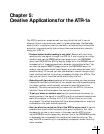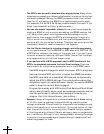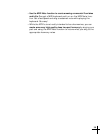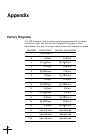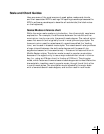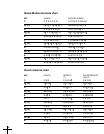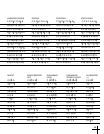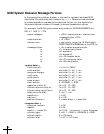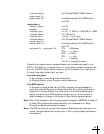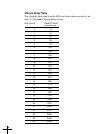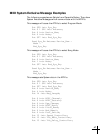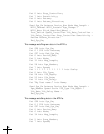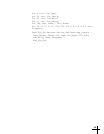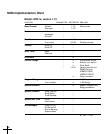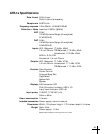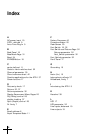
45
<vibrato delay> 0 to 25 (see DELAY TABLE, below)
<pgm name 1>…
<pgm name 13> all values between 32 (ASCII blank)
and 7FH
<song data> =
<song number> 1 to 20
<speed> 0 to 25
<vibrato type> 0 = off, 1 = SINE, 2 = SQUARE, 3 = SAW
<vibrato depth> 0 to 100 cents
<vibrato rate> 1 to 97 (.1 to 9.7 sec)
<vibrato delay> 0 to 25 (see DELAY TABLE, below)
<song name 1>…
<song name 13> all values between 32 (ASCII blank)
and 7FH
<program 1>…<program 15> 7CH = B Bypass
7DH = <- Loop
7EH = E End
7FH = -> Link
0 = (empty)
1 to 50 = program number
Transmitting <system data> causes values to be immediately used in the
ATR-1a. Transmitting <program data> or <song data> causes the data to be
put into the ATR-1a permanent memory, but the values do not take effect.
To have those data take effect, you can:
from the front panel:
in Song Mode: a new Song must be selected.
in Program Mode: a new Program must be selected.
from MIDI control:
in Program or Song Mode, send a MIDI program change message to
recall the affected Program or Song. Note that Song or Program down-
loads don’t change Modes. You must have the correct Mode selected
before transmitting a MIDI program change, or you must transmit a
SysEx message to change to Program or Song Mode, as appropriate.
Note: Due to the necessity of writing parameter changes to EEPROM, a delay of
at least 200 milliseconds is required after the transmission of Song,
Program or System parameter changes.
Note: The ATR-1a does not protect itself against SysEx parameters being out of
range. Unpredictable results may occur if out-of-range SysEx parameters
are received.



